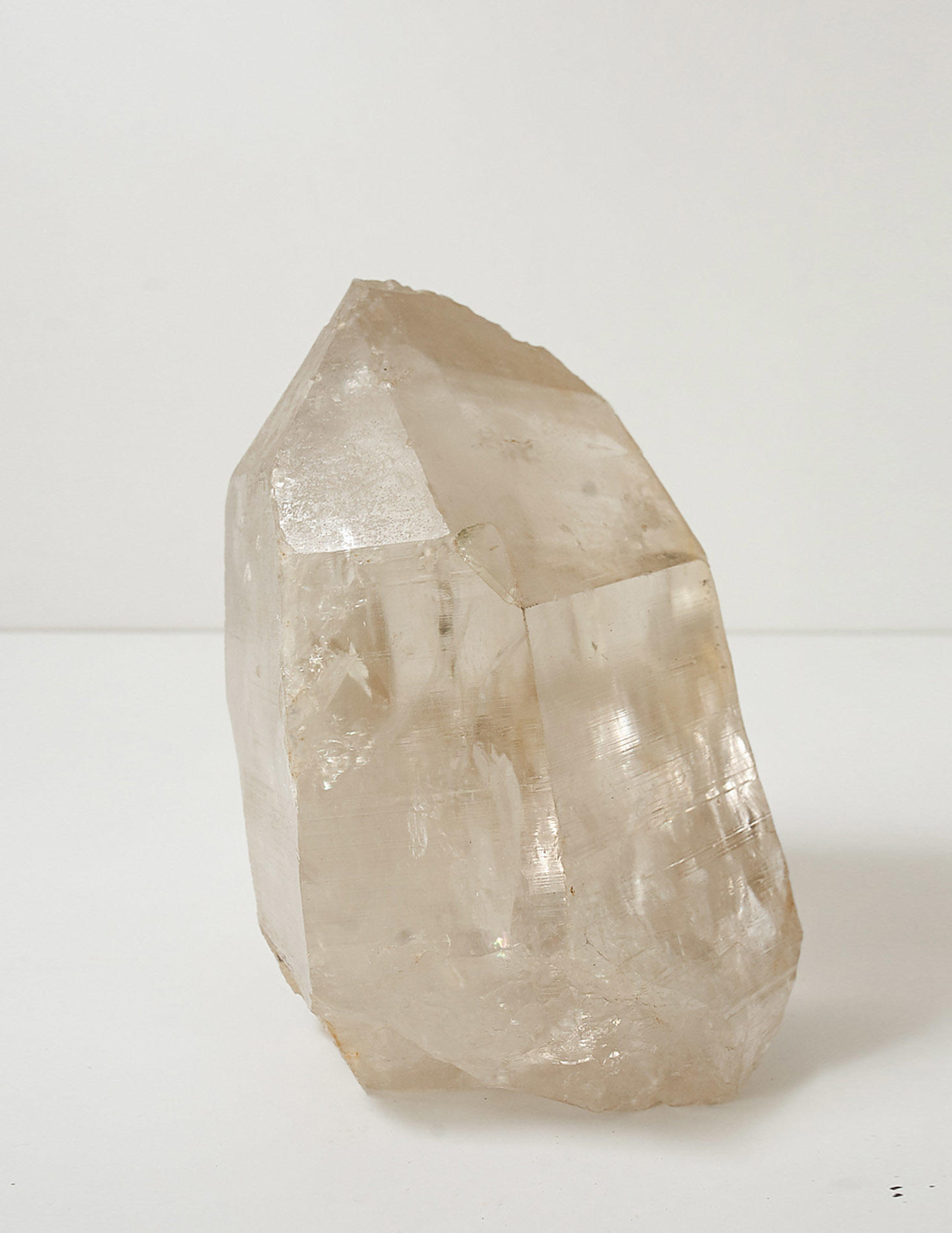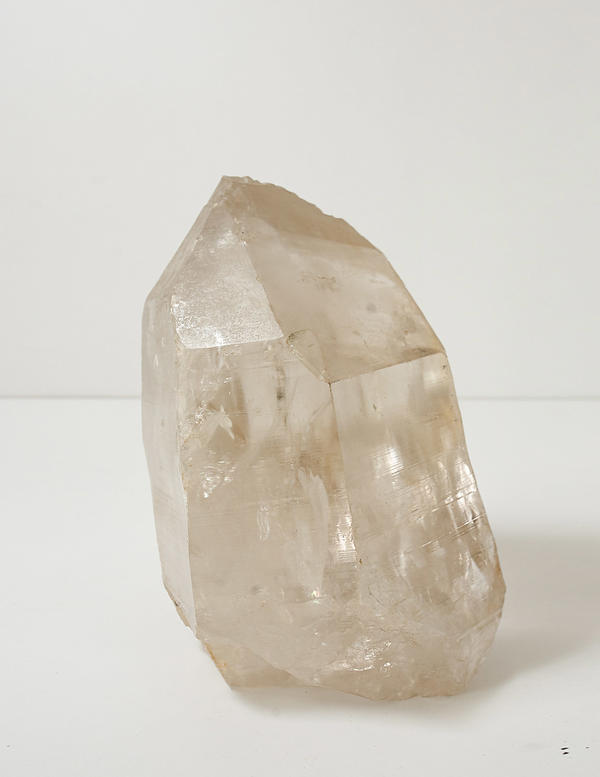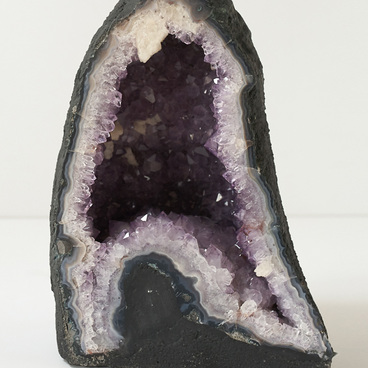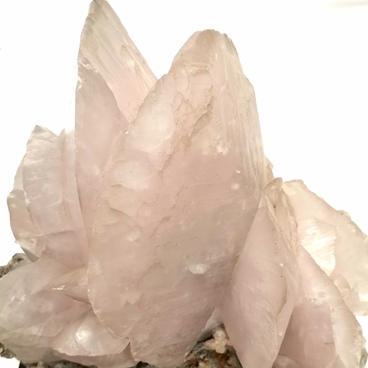Rhinestone is transparent semi-precious stone, absolutely colorless in the ideal case. However, crystals having a slight golden, lilac or pink hue are more common. This mineral, as well as amethyst, rauchtopaz or morion, is a type of quartz. Rhinestone can scratch glass: its hardness on the Mohs scale is 7 points.
Rhinestone is transparent to ultraviolet range rays. The mineral is characterized by high thermal conductivity. It does not heat up in the human hands and always remains cold, even if it is held in fist for a long time on a sultry day. The ancient Greeks considered the mineral petrified ice, and the Japanese believed it to be the frozen breath of a dragon.
Noble Romans ordered rhinestone balls to jewelers specially to cool their hands in the summer heat. In China and Japan, the skill of a jeweler was evaluated by how perfectly round he managed to carve crystal balls. In Europe, rhinestone was used for jewelry.
Large crystals were used to carve dishes. For example, Peter the Great owned a whole set made of natural crystal. Crystal signets and inkwells were popular among the nobility. It is known that the stone was liked by the famous jeweler Karl Faberge, who adorned many of his creations with rhinestone.
Rich deposits of the mineral are located in China, Madagascar and Ceylon, Brazil, Kazakhstan, the Pamyrs and the Alps. Russia also has its deposits of rock crystal: in Crimea, Yakutia, Transbaikalia, Primorye, and on the Parnuk plateau. Jewelers especially appreciate the colorless crystals pointed on both sides, but they are rare.
Stones from a deposit discovered in the 19th century in the Marmarosh massif (in the Carpathian Mountains) meet these requirements. The crystals 1to12 mm in size obtained there are so clean and impeccable in shape that they are called ‘Marmarosh diamonds’, because they do not need to be faceted. Later, similar stones were found in Yakutia and Crimea.
Much more common are crystals that are pointed only on one side, and accreted to the parent rock on the opposite side. Large specimens are found in the voids of hydrothermal lodes. Usually, small geodes or crystals are found in sedimentary rocks. These crystals are fused in the form of a brush which is attached to the wall of the crack.
Crystals range from 1 mm to 2 meters in length, although such giants are extremely rare. The stone is used for souvenirs and jewelry. In radio engineering and optics, artificial crystals are also used. Scientists have developed a technology for producing artificial rhinestone. The method allows to grow a crystal weighing more than 1 kg in one year.
Rhinestone is transparent to ultraviolet range rays. The mineral is characterized by high thermal conductivity. It does not heat up in the human hands and always remains cold, even if it is held in fist for a long time on a sultry day. The ancient Greeks considered the mineral petrified ice, and the Japanese believed it to be the frozen breath of a dragon.
Noble Romans ordered rhinestone balls to jewelers specially to cool their hands in the summer heat. In China and Japan, the skill of a jeweler was evaluated by how perfectly round he managed to carve crystal balls. In Europe, rhinestone was used for jewelry.
Large crystals were used to carve dishes. For example, Peter the Great owned a whole set made of natural crystal. Crystal signets and inkwells were popular among the nobility. It is known that the stone was liked by the famous jeweler Karl Faberge, who adorned many of his creations with rhinestone.
Rich deposits of the mineral are located in China, Madagascar and Ceylon, Brazil, Kazakhstan, the Pamyrs and the Alps. Russia also has its deposits of rock crystal: in Crimea, Yakutia, Transbaikalia, Primorye, and on the Parnuk plateau. Jewelers especially appreciate the colorless crystals pointed on both sides, but they are rare.
Stones from a deposit discovered in the 19th century in the Marmarosh massif (in the Carpathian Mountains) meet these requirements. The crystals 1to12 mm in size obtained there are so clean and impeccable in shape that they are called ‘Marmarosh diamonds’, because they do not need to be faceted. Later, similar stones were found in Yakutia and Crimea.
Much more common are crystals that are pointed only on one side, and accreted to the parent rock on the opposite side. Large specimens are found in the voids of hydrothermal lodes. Usually, small geodes or crystals are found in sedimentary rocks. These crystals are fused in the form of a brush which is attached to the wall of the crack.
Crystals range from 1 mm to 2 meters in length, although such giants are extremely rare. The stone is used for souvenirs and jewelry. In radio engineering and optics, artificial crystals are also used. Scientists have developed a technology for producing artificial rhinestone. The method allows to grow a crystal weighing more than 1 kg in one year.



